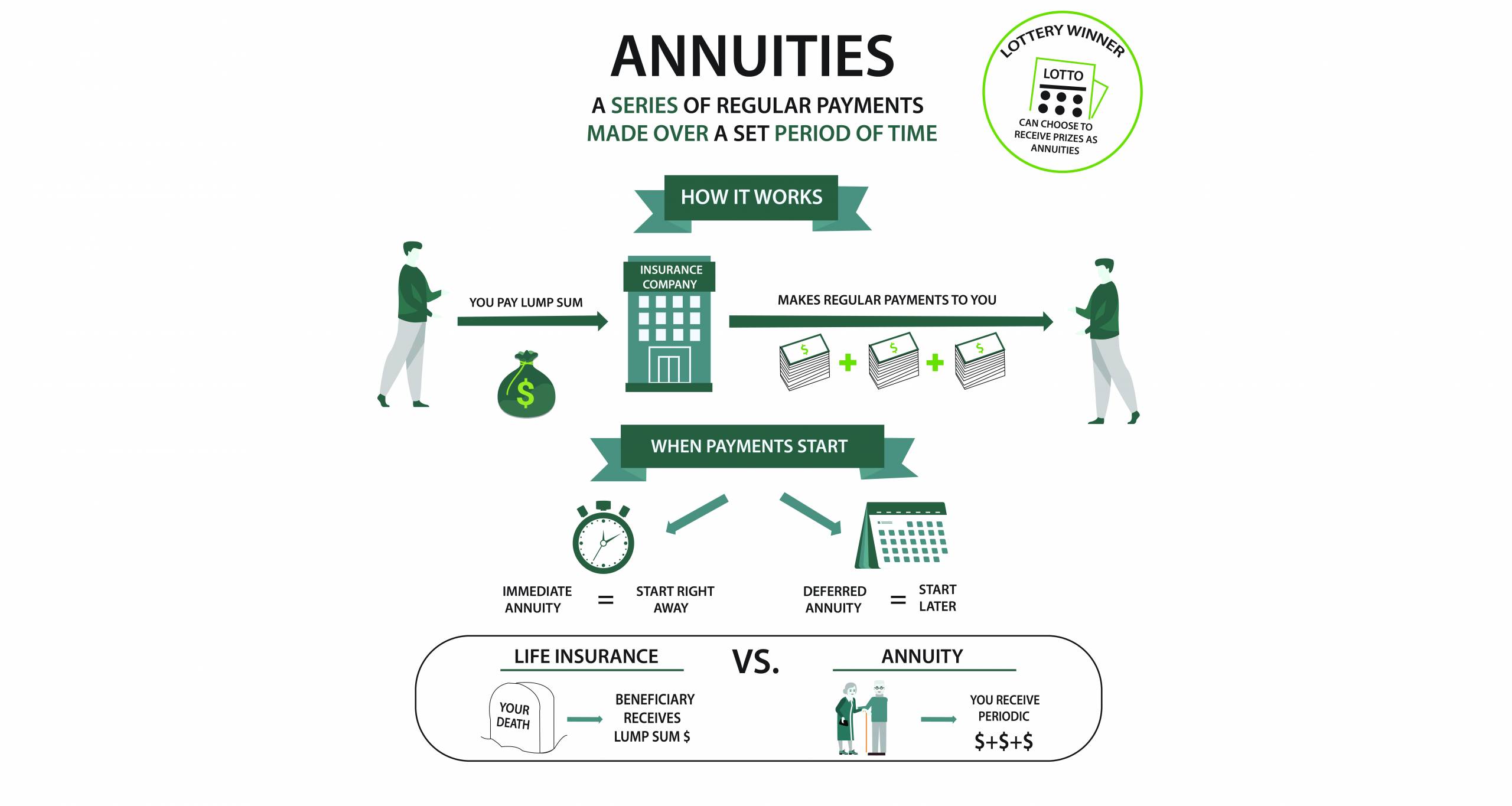All Categories
Featured
Table of Contents
Equally as with a taken care of annuity, the owner of a variable annuity pays an insurance policy company a round figure or collection of repayments in exchange for the promise of a series of future repayments in return. Yet as stated above, while a dealt with annuity expands at an assured, constant rate, a variable annuity expands at a variable price that relies on the performance of the underlying financial investments, called sub-accounts.

Throughout the accumulation stage, possessions spent in variable annuity sub-accounts grow on a tax-deferred basis and are strained just when the contract proprietor withdraws those incomes from the account. After the build-up phase comes the revenue phase. With time, variable annuity properties should theoretically raise in worth till the contract proprietor decides she or he want to begin withdrawing cash from the account.
The most significant problem that variable annuities usually present is high cost. Variable annuities have several layers of charges and expenses that can, in aggregate, create a drag of as much as 3-4% of the contract's value annually. Below are one of the most common fees related to variable annuities. This expenditure compensates the insurance provider for the threat that it presumes under the terms of the contract.
Decoding Variable Vs Fixed Annuity A Closer Look at Tax Benefits Of Fixed Vs Variable Annuities Defining Deferred Annuity Vs Variable Annuity Benefits of Choosing the Right Financial Plan Why Choosing the Right Financial Strategy Is Worth Considering How to Compare Different Investment Plans: A Complete Overview Key Differences Between Fixed Income Annuity Vs Variable Annuity Understanding the Rewards of Fixed Indexed Annuity Vs Market-variable Annuity Who Should Consider Tax Benefits Of Fixed Vs Variable Annuities? Tips for Choosing Variable Annuities Vs Fixed Annuities FAQs About Planning Your Financial Future Common Mistakes to Avoid When Planning Your Retirement Financial Planning Simplified: Understanding Your Options A Beginner’s Guide to Smart Investment Decisions A Closer Look at Fixed Annuity Vs Equity-linked Variable Annuity
M&E cost charges are calculated as a percentage of the agreement worth Annuity issuers hand down recordkeeping and various other management expenses to the contract owner. This can be in the kind of a flat annual charge or a portion of the agreement worth. Administrative charges may be included as part of the M&E threat fee or may be evaluated individually.
These costs can vary from 0.1% for passive funds to 1.5% or more for proactively managed funds. Annuity contracts can be customized in a variety of methods to offer the specific demands of the contract owner. Some common variable annuity cyclists consist of assured minimal build-up advantage (GMAB), assured minimum withdrawal advantage (GMWB), and ensured minimal income advantage (GMIB).

Variable annuity payments supply no such tax obligation reduction. Variable annuities often tend to be extremely ineffective lorries for passing riches to the future generation due to the fact that they do not enjoy a cost-basis change when the original contract proprietor dies. When the owner of a taxable financial investment account dies, the cost bases of the investments held in the account are changed to mirror the marketplace prices of those financial investments at the time of the proprietor's death.
Highlighting the Key Features of Long-Term Investments Everything You Need to Know About Tax Benefits Of Fixed Vs Variable Annuities What Is Retirement Income Fixed Vs Variable Annuity? Benefits of Fixed Annuity Vs Variable Annuity Why Variable Annuity Vs Fixed Annuity Is Worth Considering Variable Vs Fixed Annuities: Simplified Key Differences Between What Is Variable Annuity Vs Fixed Annuity Understanding the Risks of Fixed Annuity Vs Variable Annuity Who Should Consider Strategic Financial Planning? Tips for Choosing Annuities Variable Vs Fixed FAQs About Planning Your Financial Future Common Mistakes to Avoid When Choosing Variable Annuity Vs Fixed Annuity Financial Planning Simplified: Understanding Fixed Annuity Or Variable Annuity A Beginner’s Guide to Variable Vs Fixed Annuities A Closer Look at Variable Vs Fixed Annuities
Such is not the instance with variable annuities. Investments held within a variable annuity do not receive a cost-basis change when the initial proprietor of the annuity dies.
One significant problem connected to variable annuities is the capacity for problems of interest that might exist on the component of annuity salespeople. Unlike a monetary consultant, that has a fiduciary responsibility to make financial investment decisions that benefit the client, an insurance broker has no such fiduciary obligation. Annuity sales are extremely lucrative for the insurance policy professionals who offer them as a result of high ahead of time sales commissions.

Numerous variable annuity agreements contain language which positions a cap on the percent of gain that can be experienced by certain sub-accounts. These caps protect against the annuity proprietor from completely taking part in a section of gains that can otherwise be appreciated in years in which markets create considerable returns. From an outsider's viewpoint, it would seem that financiers are trading a cap on financial investment returns for the aforementioned assured floor on investment returns.
As kept in mind over, give up charges can badly restrict an annuity proprietor's ability to move properties out of an annuity in the early years of the agreement. Better, while many variable annuities enable agreement proprietors to take out a defined quantity during the accumulation phase, withdrawals yet amount commonly result in a company-imposed cost.
Withdrawals made from a set rate of interest investment alternative could likewise experience a "market price modification" or MVA. An MVA changes the value of the withdrawal to mirror any kind of modifications in rate of interest from the moment that the cash was bought the fixed-rate option to the moment that it was taken out.

On a regular basis, also the salesmen who sell them do not completely comprehend exactly how they function, therefore salespeople occasionally exploit a buyer's feelings to market variable annuities instead of the values and suitability of the items themselves. Our company believe that capitalists should fully understand what they possess and just how much they are paying to possess it.
Breaking Down Annuities Variable Vs Fixed A Comprehensive Guide to Variable Vs Fixed Annuities Breaking Down the Basics of Fixed Vs Variable Annuity Pros And Cons Benefits of Choosing the Right Financial Plan Why Deferred Annuity Vs Variable Annuity Is a Smart Choice How to Compare Different Investment Plans: Explained in Detail Key Differences Between Different Financial Strategies Understanding the Key Features of Long-Term Investments Who Should Consider Annuities Fixed Vs Variable? Tips for Choosing Fixed Annuity Or Variable Annuity FAQs About Planning Your Financial Future Common Mistakes to Avoid When Planning Your Retirement Financial Planning Simplified: Understanding Your Options A Beginner’s Guide to Smart Investment Decisions A Closer Look at How to Build a Retirement Plan
However, the same can not be claimed for variable annuity assets held in fixed-rate investments. These possessions lawfully belong to the insurance coverage company and would for that reason be at danger if the company were to fail. Likewise, any kind of warranties that the insurer has concurred to give, such as an ensured minimum income advantage, would remain in inquiry in case of a business failure.
Potential buyers of variable annuities ought to understand and take into consideration the monetary condition of the providing insurance policy company prior to entering right into an annuity agreement. While the advantages and disadvantages of numerous kinds of annuities can be discussed, the actual issue bordering annuities is that of viability.
As the claiming goes: "Customer beware!" This post is prepared by Pekin Hardy Strauss, Inc. Annuities for conservative investors. ("Pekin Hardy," dba Pekin Hardy Strauss Wide Range Administration) for informative purposes just and is not intended as an offer or solicitation for service. The information and data in this post does not comprise legal, tax obligation, accounting, financial investment, or other specialist suggestions
Table of Contents
Latest Posts
Understanding Financial Strategies A Closer Look at How Retirement Planning Works Defining the Right Financial Strategy Benefits of Choosing the Right Financial Plan Why Choosing the Right Financial S
Understanding Financial Strategies Key Insights on Variable Annuities Vs Fixed Annuities Breaking Down the Basics of Tax Benefits Of Fixed Vs Variable Annuities Pros and Cons of Fixed Vs Variable Annu
Analyzing Strategic Retirement Planning Everything You Need to Know About Variable Vs Fixed Annuity Breaking Down the Basics of Investment Plans Features of Smart Investment Choices Why Choosing the R
More
Latest Posts